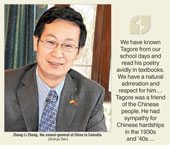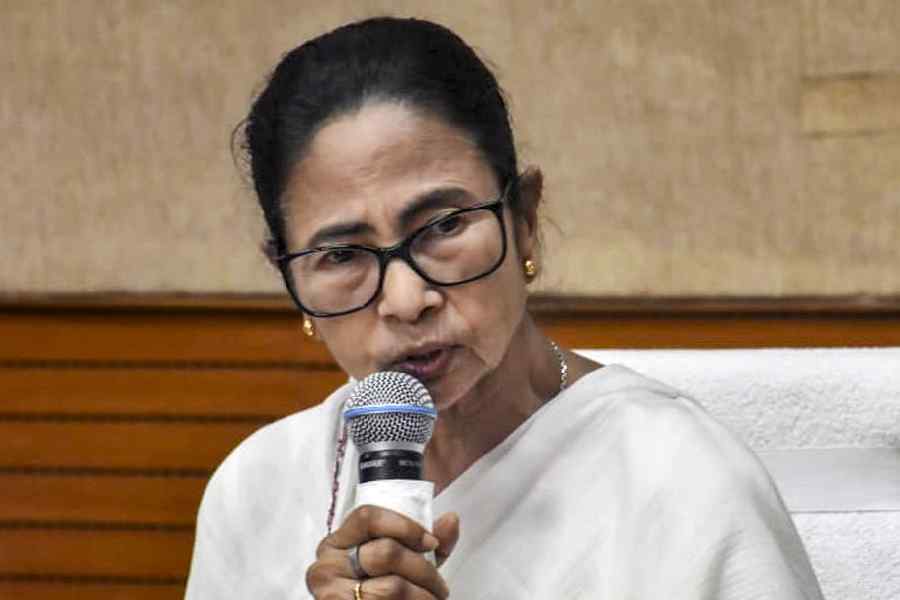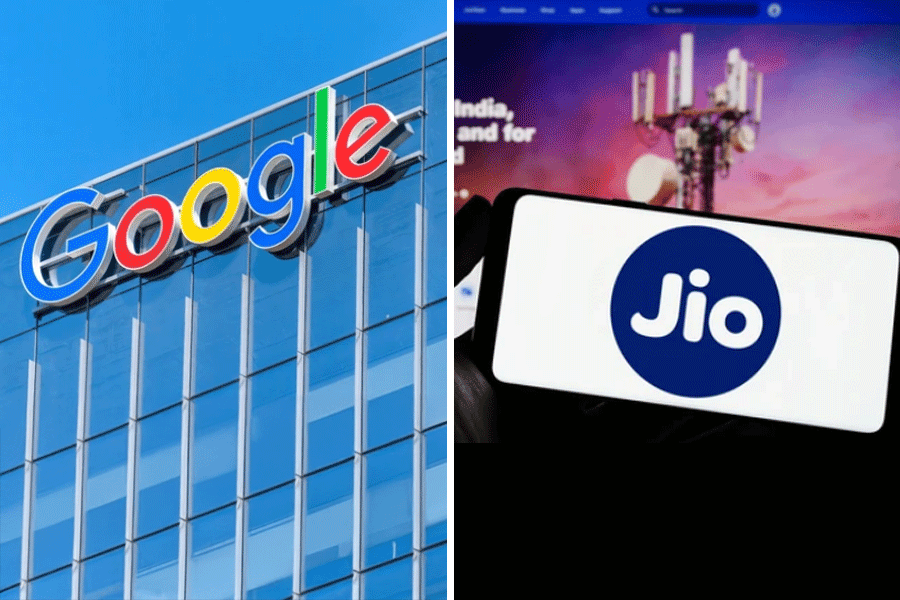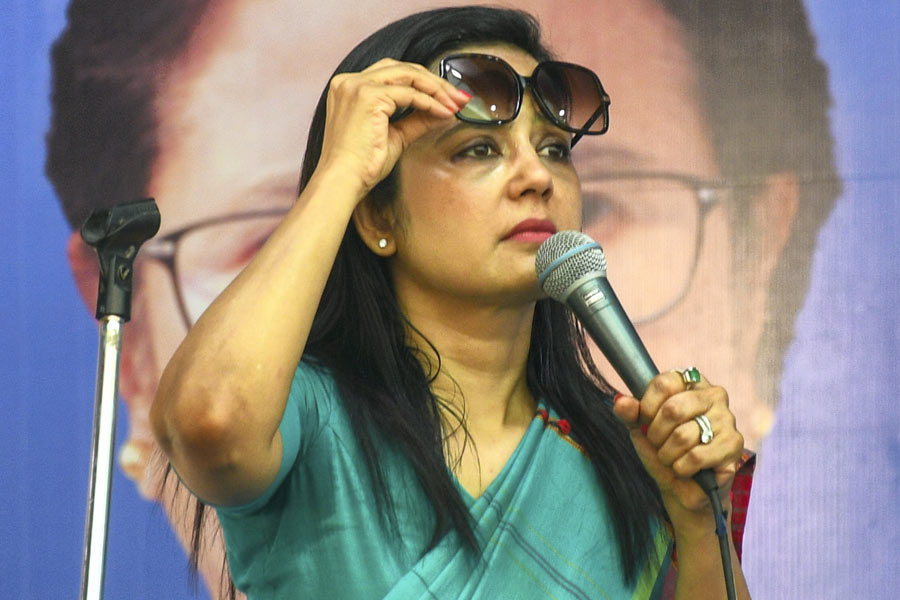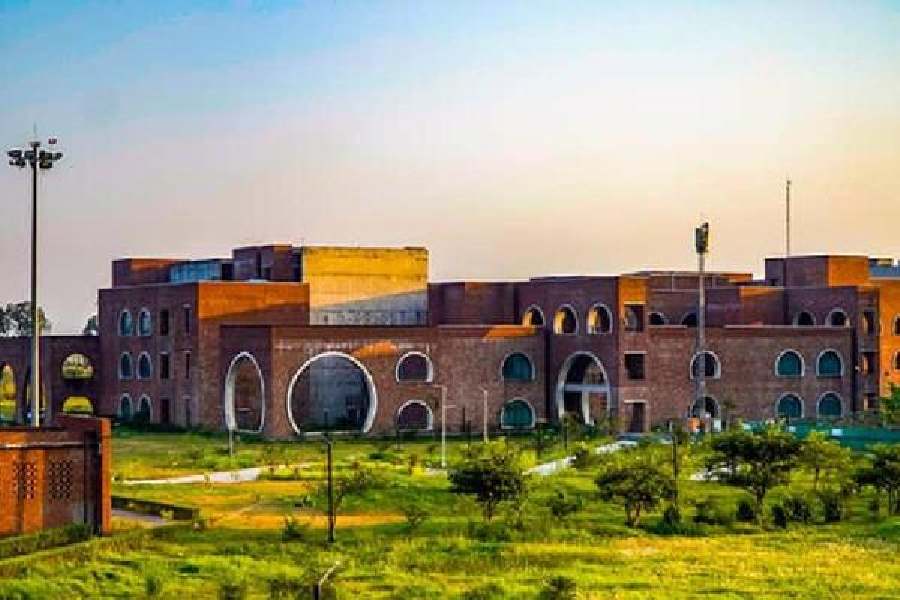 |
Zhang Li Zhong, the new consul-general of China in Calcutta, has been focusing on Rabindranath Tagore, getting in readiness the China Hall in Tagore House for an August opening; and now participating in the Year of China-India Exchange, by bringing together musicians from both countries for a concert. Held at Town Hall on May 4, the concert featured yanquin expert Professor Liu Yuening from Beijing, Pandit Tarun Bhattacharya (santoor), Prateek Chaudhuri (sitar), Arif Khan (tabla) and young yanquin performer Du Yu. Three Tagore songs, sung by Indian and Chinese singers, rounded off the concert.
The young, articulate envoy spoke his mind in an interview with Rita Bhimani a day before the concert.
Q: Rabindranath Tagore inspired Chinese intellectuals in the early decades of the last century and his visit to China in 1924 gave a boost to the New Culture Movement. Are you familiar with Tagore’s works?
A: We have known Tagore from our school days and read his poetry avidly in textbooks. We have a natural admiration and respect for him. I consider myself fortunate to come to the city of culture and joy, where he was born. Tagore was a friend of the Chinese people. He had sympathy for Chinese hardships in the 1930s and ’40s. Our concert, Night of the Orient: When East Meets East, should revitalise the friendship between our two countries.
We have plans for the China Hall in Tagore House, where apart from some wonderful archival material, we will display a replica of a portrait of Tagore by the famous Chinese painter Xu Beihong — the original of which is in Santiniketan. Videos of Tagore’s tour of China will be shown and there will be plenty of books of Chinese translation of Tagore’s works. These will form a permanent display of translated work.
Many experts on Bengali culture have visited Calcutta, and many more such visits are on the anvil. The cultural ministry of China has earmarked Rs 5.4 million for the event in Tagore House, which will include a musical performance.
Q: The School of Chinese Language has become quite popular with students in Calcutta. Will it help them become scholars of the Chinese language or enable them to do better business with China?
A: We would like to see the school as an opportunity for Indian students to learn not just the Chinese language, but also gain a better understanding of Chinese culture.
It will give young people many more opportunities in the emerging markets if they become au fait with the Chinese language. We even have an adda corner at the school!
There are a lot of misconceptions about China that need to be removed, and I think such schools are the perfect places for encouraging more learning on all aspects of Chinese traditions and philosophy.
In the end, they will all become part of the friendship movement, as I believe that youth-to-youth exchange is vital for our relationship. Our country in fact is all set to host 500 Indian youths this year.
There are many other excellent developments, like the Central Board of Secondary Education in India now incorporating Chinese as one of the languages in schools.
At the highest governmental level, we are seeing a frequent exchange of leaders between China and India.
The visit of our premier, Wen Jiabao, saw positive discussions about expanding our converging interests and there was also the significant meeting of President Hu Jintao with Prime Minister Manmohan Singh in Sanya, China.
Q: Shouldn’t there be more focus on tourism between the countries?
A: Last year, about 500,000 tourists from India visited China. But only 100,000 Chinese tourists visited India. Considering the large population of both countries, I feel the numbers need to increase substantially.
And I definitely want to see more people-to-people visits, particularly business visits, increasing. We already have a direct flight from Calcutta to Kunming, and now there is a second direct flight proposed by Hainan Aviation from Shenzhen in Guandong province to Calcutta. We would like to see a boost in the pilgrimage to Bodh Gaya, too, which has played a unique role in the relationship between India and China.
Q: China and India have become the flavours of the day as we look at their impact on the world economy. Your views? A: Yes, China and India are two emerging economies. China is set to emerge as India’s largest trading partner. The target for bilateral trade is to reach $100 billion by 2015.
I am in touch with many Chinese companies in eastern India, who are strong in the fields of telecom, steel, power and contracting. There are 15,000 locals working at these facilities.
Q: What about sub-standard Chinese goods in India? Also, are Chinese products seen as a threat to India?
A: We need to encourage goods coming into India through transparent channels. Both sides should make an effort to bring in high-quality products, otherwise credibility will suffer.
Q: Are you planning to give any special concessions to the Chinese community in Calcutta? They have made their own contribution to the economic and social development of Calcutta.
A: Calcutta has the largest Chinese community in India. Most of them have become Indian citizens. I am optimistic that they can be a bridge in the business ties and people-to-people exchanges. We maintain regular dialogue with leaders of the Chinese community and encourage them to live in peace. I particularly commend their hard work and entrepreneurship skills.
But I feel the newer generation needs to be energised into knowing more about what is going on in China and we would love to give them assistance in enhancing their connections with Chinese culture and also provide them a helping hand for business activities.
Q: What about Indianised Chinese food?
A: It’s a result of the innovative nature of the Chinese here. They have made Chinese cuisine a part of Indian culture.
What do you want to ask Zhang Li Zhong? Tell ttmetro@abpmail.com

